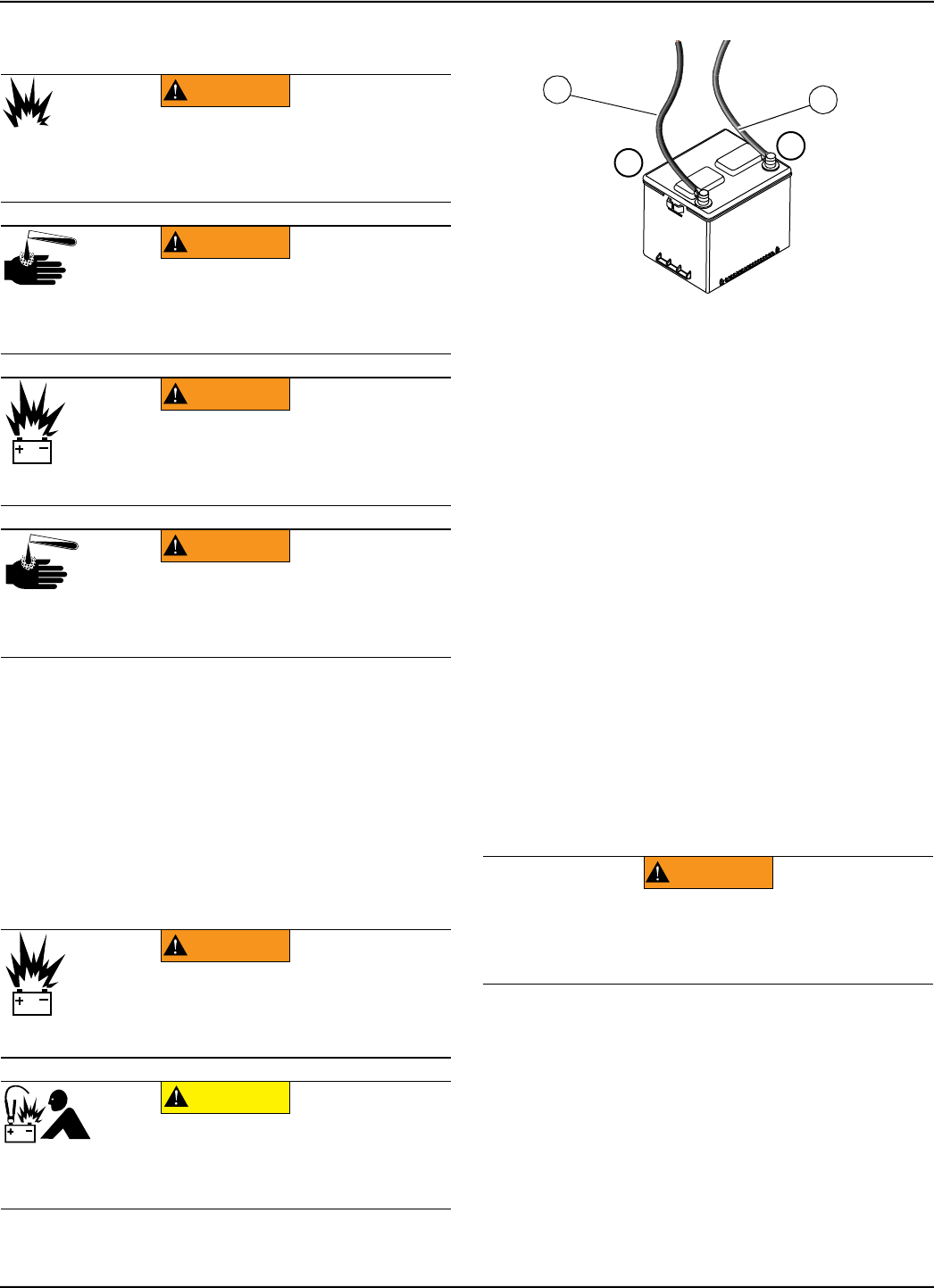Installation Guide
Table Of Contents
- Installation Guidelines 60 Hz Air-Cooled Generators
- Table of Contents
- Section 1: Safety Rules & General Information
- Section 2: Unpacking and Inspection
- Section 3: Site Selection and Preparation
- Section 4: Generator Placement
- Section 5: Fuel Conversion / Gas Connections
- Section 6: Electrical Connections
- Section 7: Control Panel Startup / Testing
- Section 8: Troubleshooting
- Section 9: Quick Reference Guide
- Section 10: Accessories
- Section 11: Diagrams

Electrical Connections
32 Installation Guidelines for 60 Hz Air-Cooled Generators
Battery Installation
• (Unsealed 26R batteries only): Fill battery with
the correct electrolyte fluid, if necessary.
• Fully charge battery before installing it.
Complete the following steps before installing and con-
necting battery:
1. Verify generator is OFF.
2. Turn off utility power supply to transfer switch.
3. Remove 7.5A fuse from generator control panel.
Connecting the Battery
See Figure 6-2. Battery cables (A, B) were factory
connected at the generator.
Figure 6-2. Battery Cable Connections
Proceed as follows to connect battery cables to battery
posts:
1. Connect red positive battery cable (A: from starter
contactor) to positive battery post. Tighten to 70 in-
lbs (8 Nm).
2. Connect black negative battery cable (B: from
frame ground) to negative battery post. Tighten to
70 in-lbs (8 Nm).
3. Install red battery post cover (shipped with loose
parts).
NOTE: Apply dielectric grease to battery posts to pre-
vent corrosion.
NOTE: In areas where temperatures fall below 0 °F
(-18 °C), a pad type battery warmer is recommended to
aid in cold climate starting. The battery warmer is avail-
able as part of a cold weather kit from any IASD.
NOTE: A battery warmer is not necessary for AGM-style
batteries.
Battery Disposal
Always recycle batteries in accordance with local laws
and regulations. Contact your local solid waste collection
site or recycling facility to obtain information on local
recycling processes. For more information on battery
recycling, visit the Battery Council International website
at: http://batterycouncil.org
(000137a)
WARNING
Explosion. Batteries emit explosive gases while
charging. Keep fire and spark away. Wear protective
gear when working with batteries. Failure to do so
could result in death or serious injury.
(000138a)
WARNING
Risk of burns. Batteries contain sulfuric acid and can
cause severe chemical burns. Wear protective gear
when working with batteries. Failure to do so could
result in death or serious injury.
(000133)
WARNING
Explosion. Batteries emit explosive gases.
Always connect positive battery cable first to
avoid spark. Failure to do so could result in
death or serious injury.
(000163a)
Risk of burn. Do not open or mutilate batteries.
Batteries contain electrolyte solution which can cause
burns and blindness. If electrolyte contacts skin or
eyes, flush with water and seek immediate medical
attention.
WARNING
(000133)
WARNING
Explosion. Batteries emit explosive gases.
Always connect positive battery cable first to
avoid spark. Failure to do so could result in
death or serious injury.
(000167a)
Equipment damage. Do not make battery
connections in reverse. Doing so will result
in equipment damage.
CAUTION
–
+
001832
001832
B
A
WARNING
(000228)
Environmental Hazard. Always recycle batteries at an
official recycling center in accordance with all local
laws and regulations. Failure to do so could result in
environmental damage, death, or serious injury.










